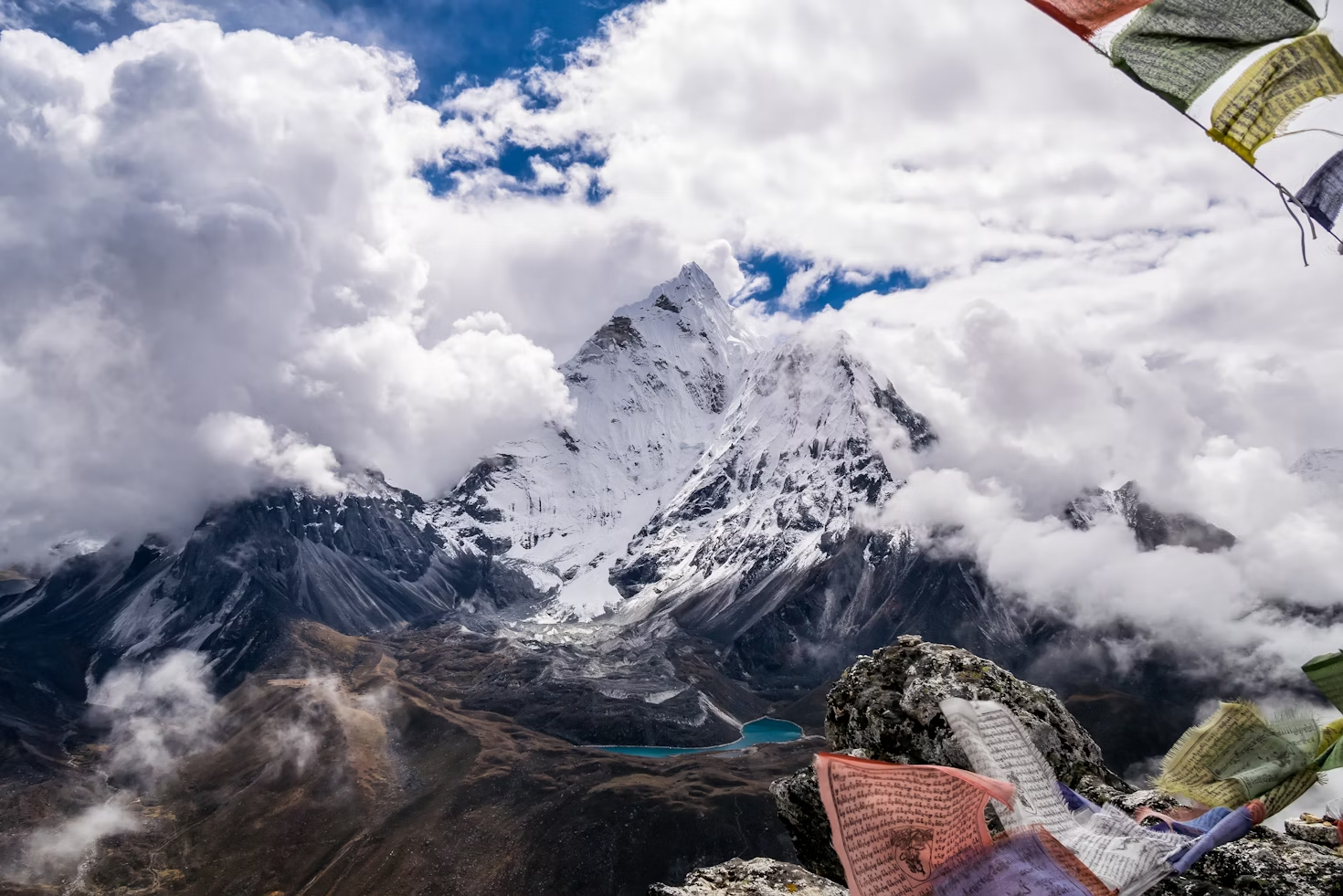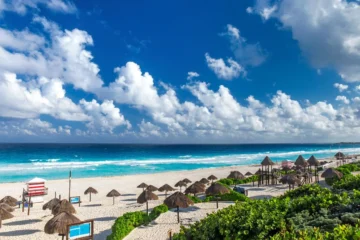Nepal, the land of the Himalayas, is a paradise for adventurers and nature enthusiasts. While Everest might be the most famous peak, the Great Himalaya Trail (GHT) offers an unparalleled trekking experience that traverses the entire length of the country. Stretching from the eastern border with India to the western border with Tibet, the GHT is a testament to Nepal’s stunning diversity. This epic trail is not just about conquering heights; it’s about immersing yourself in the rich cultural tapestry and breathtaking landscapes that define this remarkable country.
Overview of the Great Himalaya Trail
The Great Himalaya Trail is one of the longest and most challenging treks in the world, extending approximately 1,700 kilometers (1,056 miles) across the length of Nepal. It comprises two main routes: the High Route and the Low Route. The High Route takes trekkers through high mountain passes and remote villages, offering breathtaking views of the world’s highest peaks. The Low Route, on the other hand, provides an easier trek through lower altitudes, lush forests, and terraced fields.
High Route vs. Low Route
- High Route: This trail is for seasoned trekkers seeking an adrenaline-pumping adventure. It traverses high-altitude passes, such as the Lumba Sumba Pass and the Sherpani Col, providing stunning vistas of towering peaks like Everest, Makalu, and Kanchenjunga. This route demands excellent fitness and experience with high-altitude trekking.
- Low Route: The Low Route offers a more accessible option for trekkers who prefer a less challenging adventure. It winds through picturesque villages, terraced fields, and verdant forests, providing insights into the daily lives and cultures of Nepal’s diverse ethnic communities.
The Stunning Diversity of Nepal’s Landscapes
Eastern Nepal: Kanchenjunga to Makalu
The eastern section of the GHT begins in the Kanchenjunga region, home to the world’s third-highest peak, Kanchenjunga (8,586 meters/28,169 feet). The trek starts with lush rhododendron forests, and as you gain altitude, the landscape transforms into alpine meadows and glacial moraines. The Kanchenjunga Base Camp offers awe-inspiring views of the massive mountain and surrounding peaks.
Continuing westward, the trail leads to the Makalu-Barun National Park, a remote and pristine area that shelters a wide variety of flora and fauna. The Makalu Base Camp trek is a highlight, offering close-up views of Makalu (8,485 meters/27,838 feet), the fifth-highest mountain in the world. The trek passes through dense forests and high-altitude landscapes, providing a unique wilderness experience.
Central Nepal: Everest to Annapurna
As the trail progresses, trekkers enter the Solu-Khumbu region, home to the legendary Mount Everest (8,848 meters/29,029 feet). While the Everest Base Camp trek is a popular destination, the GHT takes you off the beaten path, offering a more secluded and immersive experience. Trekkers can explore the rich Sherpa culture, visit ancient monasteries, and enjoy panoramic views of Everest and surrounding peaks.
The trail then leads into the Rolwaling Valley, a hidden gem known for its stunning scenery and traditional villages. The trek through this valley offers a sense of solitude and adventure, with the chance to cross the challenging Tashi Lapcha Pass.
Further west, the trail enters the Annapurna region, famous for its diverse landscapes and cultural richness. The Annapurna Circuit is a highlight of the GHT, offering a mix of lush valleys, arid landscapes, and high mountain passes. The Thorong La Pass, at 5,416 meters (17,769 feet), is a significant challenge, rewarding trekkers with breathtaking views of the Annapurna and Dhaulagiri ranges.
Western Nepal: Dolpo to Rara Lake
Western Nepal is less frequented by trekkers, offering a sense of adventure and discovery. The trail passes through the Dolpo region, known for its rugged terrain and ancient Tibetan culture. The Upper Dolpo trek is a remote journey that takes you through barren landscapes, high passes, and traditional villages. Trekkers can visit the Shey Phoksundo Lake, a turquoise gem surrounded by snow-capped peaks.
Continuing westward, the trail reaches the Rara Lake National Park, home to Nepal’s largest lake. The trek to Rara Lake offers a serene experience, with opportunities to explore the rich biodiversity of the region. The crystal-clear waters of Rara Lake reflect the surrounding hills and mountains, creating a breathtaking panorama.
Cultural Richness Along the Trail
Ethnic Diversity
The Great Himalaya Trail offers a unique opportunity to immerse yourself in Nepal’s rich cultural diversity. The trail passes through regions inhabited by various ethnic groups, each with its distinct language, traditions, and lifestyle. Trekkers can interact with the Sherpa, Rai, Limbu, Tamang, Gurung, Magar, Thakali, and Tibetan communities, among others. Each community offers a glimpse into their unique way of life, from traditional architecture and clothing to local festivals and rituals.
Traditional Villages
Throughout the journey, trekkers will encounter traditional villages where time seems to stand still. These villages are characterized by their warm hospitality and vibrant cultural heritage. Visitors can stay in teahouses or homestays, experiencing local life firsthand. From Namche Bazaar in the Everest region to Manang in the Annapurna region, these villages offer a welcoming atmosphere and insights into the daily lives of the locals.
Ancient Monasteries
The Great Himalaya Trail is dotted with ancient monasteries and spiritual sites, providing a deeper understanding of Nepal’s religious and cultural heritage. Trekkers can visit Tengboche Monastery in the Everest region, known for its stunning location and spiritual significance. The Braga Monastery in the Annapurna region is another highlight, offering a peaceful retreat and breathtaking views of the surrounding peaks.
The Challenges of Trekking the GHT
Altitude and Acclimatization
One of the primary challenges of trekking the Great Himalaya Trail is the high altitude. The trail reaches elevations above 5,000 meters (16,404 feet), requiring trekkers to acclimatize properly. Altitude sickness is a risk, and trekkers must be aware of the symptoms and take necessary precautions. It’s essential to pace oneself, take rest days, and stay hydrated to minimize the risk of altitude-related issues.
Physical Fitness and Endurance
Trekking the GHT requires a high level of physical fitness and endurance. The trail involves long days of walking, often in challenging terrain. Trekkers should prepare with regular cardiovascular and strength training exercises to build stamina and muscle strength. Prior trekking experience in high-altitude environments is also beneficial.
Weather and Terrain
The weather in the Himalayas can be unpredictable, with rapid changes in temperature and conditions. Trekkers must be prepared for varying weather, from hot days in lower altitudes to freezing temperatures at high passes. The trail also involves diverse terrain, including rocky paths, steep ascents, and river crossings, requiring careful navigation and proper gear.
Preparing for the Great Himalaya Trail
Permits and Regulations
Trekking the GHT requires obtaining several permits, depending on the regions you plan to visit. Essential permits include the Trekking Information Management System (TIMS) card, Annapurna Conservation Area Permit (ACAP), Sagarmatha National Park Permit, and special permits for restricted areas like Upper Dolpo and Kanchenjunga. It’s crucial to research and secure the necessary permits before embarking on the journey.
Trekking Gear and Equipment
Proper gear is essential for a successful trek along the Great Himalaya Trail. Some of the essential items include:
- Trekking Boots: Sturdy, waterproof boots with good ankle support are crucial for navigating challenging terrain.
- Clothing: Layered clothing is essential to accommodate varying temperatures. Include moisture-wicking base layers, insulated jackets, and waterproof outer layers.
- Backpack: A comfortable, durable backpack with a capacity of 50-70 liters is recommended to carry essentials.
- Sleeping Bag: A warm, compact sleeping bag suitable for sub-zero temperatures is necessary for high-altitude camps.
- Trekking Poles: Useful for stability and reducing strain on knees during steep descents.
- Navigation Tools: Maps, compass, and GPS devices are essential for route finding and safety.
Guided Treks vs. Independent Trekking
Trekkers have the option to choose between guided treks and independent trekking. Guided treks offer the advantage of experienced guides, logistical support, and local knowledge, enhancing the overall experience. They also provide a sense of security and safety in challenging environments. Independent trekking, on the other hand, allows for more flexibility and self-discovery. Trekkers can set their pace, explore off-the-beaten-path areas, and enjoy a more solitary experience.
The Rewards of Trekking the Great Himalaya Trail
Breathtaking Scenery
The Great Himalaya Trail offers some of the most breathtaking scenery on the planet. From the towering peaks of Everest and Kanchenjunga to the serene beauty of Rara Lake, the trail provides an ever-changing panorama of natural wonders. Trekkers will witness snow-capped mountains, verdant valleys, cascading waterfalls, and pristine lakes, each more stunning than the last.
Cultural Immersion
Trekking the GHT is not just about the landscapes; it’s about immersing yourself in the rich cultures that define Nepal. The trail offers a unique opportunity to interact with local communities, learn about their traditions, and gain a deeper understanding of their way of life. From participating in local festivals to sharing meals with host families, the cultural experiences along the trail are unforgettable.
Personal Growth and Achievement
Completing the Great Himalaya Trail is a significant achievement that requires determination, resilience, and perseverance. The challenges faced along the way contribute to personal growth and self-discovery. Trekkers often return with a newfound sense of accomplishment, having conquered one of the world’s most demanding trails.
Conclusion
Trekking the Great Himalaya Trail is an epic adventure that offers a unique blend of natural beauty, cultural richness, and personal challenge. It’s a journey that takes you through some of the most remote and stunning landscapes on earth, providing a deeper connection with nature and a profound appreciation for Nepal’s diverse cultures. Whether you choose the High Route for its challenging terrain and breathtaking vistas or the Low Route for its cultural immersion and accessible trails, the GHT promises an unforgettable experience.
For those seeking a trekking adventure beyond the ordinary, the Great Himalaya Trail is a once-in-a-lifetime opportunity to explore the heart of the Himalayas. It’s a journey that will leave you with lasting memories, new friendships, and a deeper understanding of the world’s tallest mountain range. So lace up your boots, pack your bags, and embark on an epic adventure across Nepal’s Great Himalaya Trail.




